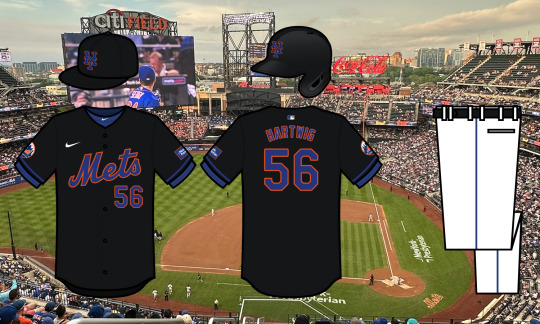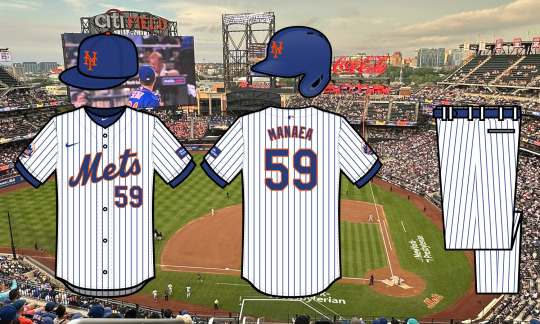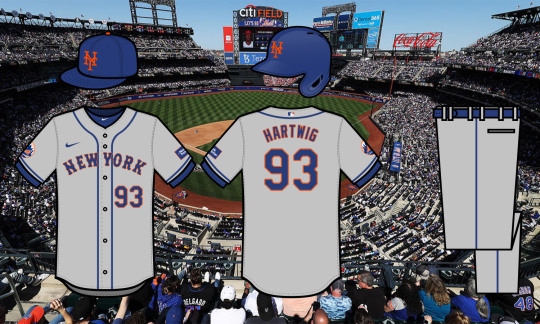#grant hartwig
Text














Joey Wendle takes 13. Last worn by Luis Guillorme in 2023.
Tyrone Taylor takes 15. Last worn by Danny Mendick in 2023.
Jake Diekman takes 30. Last worn by Rafael Ortega in 2023.
Max Kranick takes 32. Last worn by Daniel Vogelbach in 2023.
Adrian Houser takes 35. Last worn by Justin Verlander in 2023.
Luis Severino takes 40. Last worn by Drew Smith, who switches from 40 to 33. Last worn by Trevor Gott in 2023,
Harrison Bader takes 44. Last worn by T.J. McFarland in 2023.
Yohan Ramírez takes 46. Last worn by John Curtiss in 2023.
Michael Tonkin takes 51. Last worn by Paul Sewald in 2020.
Jorge López takes 52. Last worn by Brad Hand in 2021.
Grant Hartwig switches from 93 to 56. Last worn by Tyler Pill in 2017.
Sean Manaea takes 59. Last worn by Carlos Carrasco in 2023.
Zack Short takes 74. Last worn by Chris Mazza in 2019.
#New York Mets#joey wendle#tyrone taylor#jake diekman#max kranick#adrian houser#luis severino#drew smith#harrison bader#yohan ramirez#michael tonkin#jorge lopez#grant hartwig#sean manaea#zack short
0 notes
Link
[ad_1] BALTIMORE — With the focus now firmly turned toward the future, the rest of the season will be an audition of sorts for some of the Mets. Right-handed reliever Grant Hartwig has shown well in his audition so far. The Detroit-area native who put off medical school to give baseball a shot seems to have made the right decision. Hartwig is 3-1 with a 3.66 ERA over 19 2/3 innings. The Mets have slowly given him more work and more difficult work, using him in high-leverage situations or to face tough spots in the batting orders. Hartwig started off solid after the Mets called him up in June. He didn’t allow an earned run over his first four appearances (four innings). But after allowing earned runs in back-to-back appearances for the first time right after the All-Star break, Hartwig noticed the league making some adjustments to him. So, he countered with one of his own by using his cutter against right-handed hitters. “I didn’t use it at all in AAA, but I saw some results with it early on against right-handers (in the Major Leagues), especially when executed,” Hartwig told the Daily News. “But when not executed, that’s been the pitch that’s hurt me so far.” Hartwig has thrown 71 cutters so far this season, according to Statcast, and has thrown them mostly in on right-handed hitters. His sinker-slider combination has played better on lefties, which is not what he expected. But he’s found that hitters are chasing the slider more when he’s able to control the outside part of the plate and the cutter has helped him do so. “Some guys that like the ball coming in on them that are trying to turn and burn, or guys who are trying to see lanes against me, whether it’s outside or inside, that’s kind of the mediator that makes them have to honor the sinker,” Hartwig said. “It also introduces more chase for a slider. So if I can control that to the outside part of the plate against a righty that tunnel now has to be honored for the slider.” Hartwig keeps the ball on the ground for the most part, which is beneficial for a bullpen that has suffered from home run problems all season. Hartwig hasn’t given up a single long ball yet in his rookie campaign and he has a 43.9% ground-ball rate. The Mets don’t want to overload Hartwig, but they know they can use him for multiple innings. Saturday night in Baltimore, the former Miami (Ohio) standout went 2 1/3 innings allowing one run on one hit. Two weeks ago in Boston, Hartwig was tasked with acting as the opener during the resumption of a game that was suspended due to rain. Technically, he threw two full innings, but it was parts of three. The third up didn’t even faze the 25-year-old. It’s less about the situational aspect of pitching for Hartwig and more about execution. “I think my stuff plays well when I use it the way I’m supposed to,” he said. A lot of this is new experiences facing new batters and different types of batters. It’s kind of just trial and error first, so you really don’t know until you use things.” If Hartwig keeps executing, he may find a way back into the Mets’ bullpen next season. SQUIRRELY JEFF Jeff McNeil hasn’t looked like the same player that won the NL batting title last season, but he’s been starting to feel more like that player in recent weeks. McNeil drove in all three of the Mets’ runs in a 9-3 loss to the Orioles on Saturday night at Camden Yards, going 2-for-4 with a two-run home run. But it was the RBI single he seemed happier with. Putting the ball in play and making life hard on opposing pitchers is what McNeil is good at. “Just trying to get my swing better, just trying to get back to who I am,” McNeil said. “Hitting singles, trying to get on base. It’s been a really frustrating year for me. I’m not where I want to be, the team isn’t where we want to be. I’m doing what I can to get back.” Getting the old McNeil back to where he once was would indicate this year was an aberration, and not the norm for one of the Mets’ most important hitters. TRAINER’S ROOM Brandon Nimmo and Starling Marte were both out of the lineup again Sunday for the Mets’ series finale against Baltimore. They each received scheduled days off, with Nimmo still favoring his left quad and Marte trying to make sure his migraine headaches don’t return. Both were available off the bench. () [ad_2]
0 notes
Text

FIRST DETAILS OF MOONAGE DAYDREAM DOC ANNOUNCED (source)
“Feels like something’s gonna happen this year...”
Following previous online whispers, details have finally been revealed regarding Brett Morgen’s Moonage Daydream film.
Announced today, the “feature-length experiential cinematic odyssey” is due for release later in the year. Keep reading for the full press release:
Neon has landed the rights to release “Moonage Daydream,” a new feature film, concert documentary and “experiential cinematic odyssey” that follows David Bowie’s life and musical career and is the first sanctioned by Bowie’s estate.
Brett Morgen is directing the film that is near completion and will feature Bowie’s own narration. Neon will release “Moonage Daydream” domestically, while Universal Pictures Content Group will release the film internationally, and HBO Documentary Films has North American rights for streaming and cable in spring 2023.
The film was designed from conception as a unique cinematic experience and will also be released in IMAX in select markets. The film will also be released in partnership with Public Road Productions, BMG, Live Nation Productions, and HBO Documentary Films.
“Moonage Daydream” illuminates the life and genius of David Bowie with a project that shows how Bowie himself worked across several disciplines, not just music and film but also dance, painting, sculpture, video and audio collage, screenwriting, acting, and live theatre. The film reveals the celebrated icon through his own voice and features 48 musical tracks, mixed from their original stems.
Morgen was granted access to Bowie’s archives by his estate in 2017 and presented him with master recordings as well as never-before-seen 35mm and 16mm reels of never-before-seen performances, all of which will appear on screen for the first time. In addition, all music in the film has been remixed from the original stems into Dolby Atmos, 12.0, 5.0, and 7.1/5.1.
“Moonage Daydream” is written, directed, edited, and produced by Morgen. The film’s executive producers are Hartwig Masuch, Kathy Rivkin-Daum and Justus Haerder for BMG; Michael Rapino, Heather Parry, and Ryan Kroft for Live Nation Productions; Bill Zysblat, Tom Cyrana, Aisha Cohen, and Eileen D’Arcy from RZO; Billy Gerber, and Debra Eisenstadt. BMG and Live Nation Productions financed the film.
Bowie’s long-time collaborator, friend and music producer Tony Visconti also worked on the film alongside sound mixer Paul Massey and David Giammarco, sound design team of John Warhurst and Nina Hartstone and VFX Producer Stefan Nadelman, who worked with Morgen on his film “Kurt Cobain: Montage of Heck.”
The title “Moonage Daydream” references David Bowie’s eponymous song from the influential 1972 album “The Rise and Fall of Ziggy Stardust and the Spiders from Mars,” which introduced the world to his iconic, gender-bending, and groundbreaking stage persona, Ziggy Stardust.
NEON’s Jeff Deutchman negotiated the North America deal with Kevin Koloff, as well as Karen Gottlieb of Grubman Shire Meiselas & Sacks, P.C. Submarine and WME handled sales for “Moonage Daydream.”
#David Bowie#my post#WE'RE GETTING A DOC OMG OMG OMG OMG OMG OMG OMG#THIS WAS POSTED YESTERDAY BUT I WASN'T ABLE TO POST IT FOR SOME REASON SO IM TRYING AGAIN
7 notes
·
View notes
Text
I’m trying to make a sort of masterpost on performers who’s played two different leads in “Phantom of the Opera”, or in POTO/LND. The lists are in no way complete, so feel free to suggest names to add in the comments!
PHANTOM OF THE OPERA
POTO CHRISTINE / POTO CARLOTTA
Jan Horvath (Broadway)
Danielle Everett (Australian Tour)
Glenda Balkan (Toronto, Canadian Tour)
Claire Louise Hammacott (West End)
Evelyn Werner (Hamburg)
Eva Malmgren (Copenhagen)
Malin Landing (Copenhagen)
Kris Koop (Broadway)
Kimilee Bryant (Basel, Toronto, US Tour, Broadway)
Monika Sommerová (Prague)
Trista Moldovan (Broadway, US Tour, Restaged Tour)
Robin Botha (Cape Town, Johannesburg, World Tour)
Kris Koop (Broadway)
(Claire Moore) (West End - was cast as Carlotta but got injured and had to withdraw from the role before cast change)
POTO CHRISTINE / POTO MME GIRY
Maree Johnson (Australian Tour, Broadway)
Nicky Adams (West End, UK Tour)
Monica Einarson (Stockholm, Copenhagen)
Kelly Jeanne Grant (US Tour, Broadway)
Kimilee Bryant (Basel, Toronto, US Tour, Broadway)
Sarah Galbraith AKA Sarah Anne Lewis (US Tour, Broadway, Las Vegas)
Bianca Tadini (Sao Paulo)
Kris Koop (Broadway)
Robin Botha (Cape Town, Johannesburg, World Tour)
POTO CARLOTTA / POTO MME GIRY
Rebecca Spencer (Hamburg, Las Vegas, World Tour)
Kimilee Bryant (Basel, Toronto, US Tour, Broadway)
Marilyn Caskey (Broadway)
Amy Justman (Broadway, Restaged US Tour)
Satomi Hoffman (Broadway)
Rebecca Eichenberger (Broadway)
Janet Saia (Broadway)
Suzanne Ishee (Broadway)
Robin Botha (World Tour)
POTO CHRISTINE / POTO MEG GIRY
Micaela Sjöstedt (Stockholm, Gothenburg)
Charlotte Brænna (Oslo)
Kaja Mianowana (Warzaw, Bialystok)
Dodie Pettit (Broadway, US Tour)
(Megan Kelly) (Christine in West End, sung Meg in a studio recording)
(Sarah Bakker) (...ish... she was in the corps de ballet before understudying Christine, but it’s unclear if she ever played Meg)
POTO RAOUL / POTO PHANTOM
Steve Barton (West End, Broadway, Los Angeles)
Yuichiro Yamaguchi (Tokyo, Osaka, Nagoya)
Hartwig Rudolz (Hamburg)
Dale Tracy (Hamburg)
Davis Gaines (Broadway, US Tour)
Kevin Gray (Broadway, US Tour)
Hugh Panaro (Broadway)
Brad Little (Broadway, US Tour, World Tour)
Ciarán Sheehan (Toronto, Broadway, US Tour)
Bengt Nordfors (Stockholm)
Jan Kyhle (Stockholm)
Alfred Pfeiffer (Vienna)
Mike Sterling (UK Tour, West End)
Thomas Schulze (Hamburg, Stuttgart)
Tomas Ambt Kofod (Copenhagen)
John Martin Bengtsson (Stockholm, Gothenburg, Copenhagen, WT)
Jonathan Roxmouth (Cape Town, Johannesburg, World Tour)
Cris Groenendaal (Toronto, US Tour, Broadway)
Gary Mauer (US Tour, Broadway)
Scott Davies (West End, UK Tour)
Ramin Karimloo (West End, RAH)
Alexander Lewis (World Tour)
Masayuki Sano (Tokyo, Nagoya, Osaka, Hiroshima, Sapporo, Yokohama, Kyoto, Shizuoka)
Rob Pitcher (Antwerp, Hamburg, Oberhausen)
Christian Müller (Essen)
David Shannon (West End)
Matthew Cammelle (West End, UK Tour)
Peter Cousens (Australian Tour, West End)
Mike Sterling (UK Tour, West End)
Simon Bowman (West End)
Tim Martin Gleason (US Tour, Broadway, Las Vegas)
Fred Silveira (Sao Paulo)
Koit Toome (Tallin/Tartu)
Zoltan Miller (Budapest)
John Cudia (Broadway, US Tour)
Roy Weissensteiner (Stuttgart)
Nicky Wuchinger (Hamburg, Oberhausen)
Max Niemeyer (Hamburg, Oberhausen)
Greg Mills (US Tour, Broadway)
Laird Mackintosh (Toronto, Broadway)
Michael Gillis (Broadway)
LOVE NEVER DIES
LND CHRISTINE / POTO CHRISTINE
Sierra Boggess (Las Vegas, Broadway, RAH, West End, Paris)
Celia Graham (West End)
Mira Ormala (West End, Oslo)
Anna O’Byrne (Melbourne, Sydney, West End)
Claire Lyon (Australian Tour, World Tour)
Meghan Picerno (US Tour, World Tour)
LND CHRISTINE / POTO CARLOTTA
Louise Fribo (Copenhagen)
Rachel Anne Moore (Hamburg, US Tour, Broadway)
LND PHANTOM / POTO PHANTOM
Masachika Ichimura (Tokyo)
Ramin Karimloo (West End, RAH)
Ben Lewis (Melbourne, Sydney, West End)
Tomas Ambt Kofod (Copenhagen)
Mathias Edenborn (Hamburg)
Gardar Thor Cortes (Hamburg, Paris, US Tour)
Michael GIllis (Broadway, US Tour)
LND/POTO PHANTOM and/or LND/POTO RAOUL
Gardar Thor Cortes (West End, Hamburg, Paris, US Tour)
Kieran Brown (West End)
Tomas Ambt Kofod (Copenhagen)
Jonas Holst (Stuttgart, Copenhagen)
Ramin Karimloo (West End, RAH)
Mathias Edenborn (Hamburg)
Bronson Norris Murphy (US Tour, Broadway)
David Thaxton (West End)
Kanji Ichimaru (Tokyo, Nagoya, Osaka, Sapporo)
Michael Gillis (Broadway, US Tour)
POTO CHRISTINE or MEG / LND MEG GIRY
Sharon Millerchip (Australian Tour)
Mary Michael Patterson (Broadway, US Tour)
#phantom of the opera#love never dies#christine daae#carlotta giudicelli#raoul de chagny#erik the spook#meg giry#madame giry#from christine to carlotta#from raoul to the phantom
42 notes
·
View notes
Photo

ADB Approves $500 Million Loan to Purchase Covid Vaccines
The Asian Development Bank (ADB) authorized a $500 million loan for Pakistan on Friday to assist the government in purchasing and deploying Covid-19 vaccines, as well as strengthening its capacity to implement the immunization program.
According to a statement issued by the ADB on Friday, the project would boost Pakistan’s National Deployment and Vaccination Plan by purchasing and distributing an estimated 39.8 million doses of Covid-19 vaccines, safety boxes, and syringes.
The project is funded by ADB’s $9 billion Asia Pacific Vaccine Access Facility, which was established in December 2020 to provide timely and equitable vaccine-related assistance to ADB developing member countries.
Vaccines serve to minimize the spread and mortality of Covid-19, restore citizen confidence, and are critical to economic recovery, according to ADB President Masatsugu Asakawa, who was quoted in the release. “This initiative will help to safeguard vulnerable individuals in Pakistan and is an essential component of the development partner package assisting the government in mitigating the pandemic’s health, social, and economic impacts.”
The project builds on the Manila-based agency’s previous support for Pakistan, which included a $300 million emergency assistance loan in May last year, to strengthen the country’s public health response, expand Covid-19 treatment, and providing cash transfers to the poorest families.
In June of last year, a $500 million Active Response and Expenditure Fund Program loan was granted to support cash transfers to impoverished families impacted by Covid-19-related lockdowns, as well as other government programs aimed at mitigating the pandemic’s severe economic and social repercussions.
In addition, a $2 million grant was awarded in March of last year through the Asia Pacific Disaster Relief Assist to fund the rapid acquisition of emergency medical supplies and equipment.
The assistance comes only days after the World Bank Group’s South Asia regional vice president, Hartwig Schafer, revealed that $150 million had been redirected to Pakistan for the procurement of Covid-19 vaccinations.
Published in Lahore Herald #lahoreherald #breakingnews #breaking
#asian development bank#asian development bank loan to pakistan#asian development bank pakistan#Business
0 notes
Text
Turn Out The Lights, The Party’s Over; Steelers’ Offensive Line Reaches End Of An Era

With the end of David DeCastro’s time in Pittsburgh comes the end of a chapter in team history. For years, the Steelers built up one of the best and most consistent offensive lines in football.
Now it’s gone.
Over the past two years, and especially over the course of this offseason, the familiar faces have gone away. In March of 2019, Marcus Gilbert was traded to the Arizona Cardinals. Ramon Foster retired after the 2019 season. This year, Alejandro Villanueva and Matt Feiler went elsewhere, Maukrice Pouncey is moving on with life’s work, and yesterday, DeCastro was released.
What comes next is a mystery. But let’s look at the past. Because now it’s officially that. The past.
At the start of last decade, the Steelers knew they needed to revamp their offensive line. Yes, they won a Super Bowl with the most rag-tag group of players you can think of: Chris Kemoeatu, Justin Hartwig, Darnell Stapleton.
But Pittsburgh had to protect their investment in Ben Roethlisberger, who was sacked 45+ times each year from 2006 to 2009.
It began with Ramon Foster, undrafted out of Tennessee in 2009, who played the role of Swiss Army Knife his first few years before settling in at guard. Maurkice Pouncey was the first draft pick, a can’t-miss center taken 18th overall, who would be another in a long line of elite Steelers’ pivots. Marcus Gilbert was the team’s second-round pick in 2011, transforming his body and his game into an athletic, excellent right tackle. DeCastro fell into the team’s lap with the 24th pick of the 2012 draft, few thought he’d make it that far, but the organization jumped on the chance. Alejandro Villanueva was the longshot who paid off, an Army Ranger turned defensive lineman turned offensive tackle. Later, Matt Feiler would take a similar path as Foster and Villanueva, undrafted players who developed and ascending into the starting lineup.
Roethlisberger’s sack numbers immediately decreased. In 2009, he was dropped a league-high 50 times. In 2010, that number (granted, in 12 games) fell to 32. In 2014, his sack rate dropped to the lowest at that point of his career, just 5.1%. And since 2016, he’s been among the least-sacked quarterbacks in football, maybe becoming the first passer to ever be the most-sacked and least-sacked guy at separate points in his career. Some of that credit goes to Roethlisberger changing his style of play. But it goes to a consistently strong unit up front who protected him.
In this era of free agency, big money contracts, and teams constantly having to reload, it was remarkable to see the Steelers’ group stay together. All of them, Foster, Pouncey, Gilbert, DeCastro, and Villanueva received second contracts. In 2019, for the first time in franchise history and as the only active unit in the NFL, three different lineman – Foster, Pouncey, and DeCastro – had 100+ starts with the team.
Sunday will mark David DeCastro's 100th NFL start. The Steelers will have three active offensive linemen with 100+ starts for the first time in franchise history.
Ramon Foster: 136
Maurkice Pouncey: 113
David DeCastro: 100
— Alex Kozora (@Alex_Kozora) October 5, 2019
But all good things come to an end. Last year proved this unit wasn’t its same old self. They were older, not as physical, not as mobile, and battled injuries across the board. 2020 was DeCastro’s worst season in the NFL, coming off ankle surgery and battling some sort of muscle injury for probably the entire season. The weight of the pandemic took its toll, too.
It was an unceremonious end to that group. A year filled with criticism and critique; much of it deserved but hopefully not detracting from the career that group had. It’s possible the Steelers build another great offensive line somewhere down the road. Hopefully with this future group of guys like Kevin Dotson, Kendrick Green, Zach Banner, Chukwuma Okorafor, and Dan Moore. Ideally, some combination of those names stick.
But just like finding a franchise quarterback, it’s rare, difficult, and all the pieces have to fall into place to build up an elite offensive line across the board. Discovering one great talent is tough enough. Good offensive lineman are hard to find and harder to keep.
The Steelers executed on their commitment to build a great offensive line. And they created one of the most solid starting fives the franchise has ever known.

Recommended for you
Please enable JavaScript to view the
comments powered by Disqus.
Read the full article
0 notes
Text
This New York-Style Warehouse Apartment Is The Dream Melbourne Rental!
This New York-Style Warehouse Apartment Is The Dream Melbourne Rental!
Homes
by Lucy Feagins, Editor

Three-seater curved sofa crafted in Italy in the 1950s and newly upholstered in aged brown Italian leather by Nicholas & Alistair. Mid-century adjustable arc floor lamp from Modern Times. Photo – Eve Wilson for The Design Files. Styling – Annie Portelli.

Circa 1960s blackwood chair with rattan (‘possibly by Jakob Rudowski!’). Photo – Eve Wilson for The Design Files. Styling – Annie Portelli.

The small line drawing of two figures is by James Watkins. Blue sky painting by Andy Murray of Aster Studio. Fritz Hansen Tray Table. Photo – Eve Wilson for The Design Files. Styling – Annie Portelli.

The large, yellow artwork is by Melbourne artist Doug Bennett. ‘The rug was sourced by Erika’s good friend Olivia via her friends in Istanbul. ‘The singing bowl is from Nepal when I travelled to Everest basecamp,’ says Erika. Photo – Eve Wilson for The Design Files. Styling – Annie Portelli.

The island bench in the kitchen is a French antique from Erika’s stepmum. Battery Vase by Tarlo & Graham. Photo – Eve Wilson for The Design Files. Styling – Annie Portelli.

‘My dad has restored several of my dining room chairs, which he found during neighbourhood hard rubbish collections – they have a significant sentimentality,’ says Erika. Photo – Eve Wilson for The Design Files. Styling – Annie Portelli.

Dog bed is by Toby & Co. Melbourne Metro artwork by an unknown artist. Bright artwork by Mysterious Al. Illustrations by Andy Murray of Aster Studio. Photo – Eve Wilson for The Design Files. Styling – Annie Portelli.

‘Most of the art in my house is by my close friend, Andy Murray of Aster Studio,’ says Erika. ‘We wrote a children’s book together with my friend Charl, and the original illustrations are the main frames in my house.
The black and white forest photograph is by Hartwig Klappert, I stayed in his house in Berlin in 2014 or 2015 and it was one of the most memorable experiences of my life, his work was so inspiring and this was a memento.’ 1950s Aloha Chair by Kjell Grant. Photo – Eve Wilson for The Design Files. Styling – Annie Portelli.

Barcelona daybed from Modern Times. Easel mirror from Nook Vintage in Collingwood. Photo – Eve Wilson for The Design Files. Styling – Annie Portelli.

Float lamp bought in France. Wooden bedside table made by Erika’s friend, Matthew Carmody. Photo – Eve Wilson for The Design Files. Styling – Annie Portelli.

Corduroy bedding is from The Sheet Society. 1950s Aloha chair by Kjell Grant. Photo – Eve Wilson for The Design Files. Styling – Annie Portelli.

Working from home set-up goals! Most plants from Loose Leaf Studio and Brunswick Street Nursery – they’ve gotten this tall from eight years of sun. The architect’s desk was left behind at Erika’s old apartment in Cremorne, and has travelled with her for the last 10 years. Vintage red and white table lamp by Mazzega, Italy c1970s. ‘Be Here Now’ by Ram Dass and Moleskine diary. Fluff Bronzing Powder & Lip Oil refillable compacts. ‘I’m obsessed with clouds, and three people have gifted me this Cloud Weather Station, including my twin sister in Japan,’ says Erika. Small, round handmade pottery vase made by a friend. Photo – Eve Wilson for The Design Files. Styling – Annie Portelli.

‘I have purchased most of my furniture from Smith St Bazaar, including the Edra Spiral Tatlin black velvet sofa . ‘Their selection is incredible and I highly recommend people consider places like theirs before bigger, commercial brands or retailers’ says Erika of the store. See the owners’ home here! Photo – Eve Wilson for The Design Files. Styling – Annie Portelli.

‘This section of the apartment became our Fluff office after we moved out of our Gertrude Street Store during Covid, so it’s a little different aesthetically from the rest of my apartment,’ says Erika. Oblique Red Bookshelf by Moooi. Fluff products including face oils, cleanser, face mask, kabuki brush, bronzing powder and lip oil metal compacts. Photo – Eve Wilson for The Design Files. Styling – Annie Portelli.
The converted warehouse apartment of Erika Geraerts is essentially just one large room, and that’s exactly the way she likes it!
The writer and founder of beauty brand Fluff has been living here since 2013, and slowly furnishing the space ever since. The apartment is part of the former Foy & Gibson complex – reportedly the largest factory in the Southern Hemisphere at one stage in the early 1900s. The factory was converted into apartments in the 1990s, representing some of Collingwood’s most sought-after real estate for renters and homeowners alike. ‘I’ve never experienced a neighbour community like this, and I don’t think I’d have it any other way,’ Erika says.
Erika loves the building’s large industrial windows and the ‘blank canvas’ nature of the interiors. ‘Waking with the morning light and seeing it fill the room is my favourite way to start the day,’ she says.
Ask some people where they bought their furniture or homewares and they won’t remember – but not Erika. Point to anything in this home and she’ll happily tell you where she found it, and why it’s the perfect piece for the space. ‘Everything tells a story, everything means something to me – even the salt and pepper shakers,’ she says. ‘There was a point where I wanted to challenge myself to find pieces that I liked, not because anyone else did, but because I felt something when I looked at it or sat in it,’ she says.
It’s not just aesthetics Erika is concerned with, but also the experiences her home offers. ‘I want my space to feel comfortable, but speak to my personality, and the people who come over for dinner. That’s why every chair is different; I started with one around the dining table, and slowly found different ones over the years.’
Soft lighting, local art, vintage Italian furniture, and plants bring warmth and texture to the space, tying everything together. Erika has purchased most of her vintage furniture from Smith St Bazaar, including her cherished Edra Spiral Tatlin black velvet sofa. ‘I consider [the owners of Smith Street Bazaar] Eddie and especially Eryca close friends; they understand my style and my apartment and have been so amazing in showing me pieces and introducing me to designers’ work that I would never have imagined, but have fallen in love with over time’ Erika explains.
Eight years is a long time by Melbourne renting standards, but Erika hopes she’ll be living here for another eight years and beyond. ‘This space has been my saving grace over the years. I can’t imagine ever not being here in some capacity.’
0 notes
Text
New revelations about Strache in the casinos affair
The winter break is over. This also applies to news about Heinz Christian Strache and his involvement in the Austrian casino affair. Numerous witnesses have now been questioned under oath. What came out allowed a deep insight into Austrian domestic politics and into Casinos Austria AG (CASAG), a partly state-owned group of companies specialising in gambling. In the meantime there are new interrogation protocols that raise the suspicion that Strache was the initiator of "... an amendment that was unfavourable to Novomatic being stamped in". Check here
Straight | Still the claim of innocence
NovomaticIt's about embezzlement, bribery and corruption. These accusations were made when Peter Sidlo (SPÖ) was appointed Chief Financial Officer of CASAG, as Sidlo was completely unqualified for the job. In order to get him to this position, however, extensive support was required. For example, the Novomatic Group, which is a major shareholder of CASAG, was promised a "certain concession" regarding future gambling licenses. However, it is not only Novomatic that is in the investigators' sights but also ten other accused. At this point in time, all of them are still under the guilty plea of innocence. Click here to find out more
Novomatic on the outside
An important witness in the trial is Alexander Labak. Even in his time as head of Casinos Austria AG, the wrangling over a clear legal position was great. He was CEO of CASAG for almost two years until his contract was suddenly terminated - prematurely. Shortly after his appointment, he met Heinz Christian Strache, the then head of the FPÖ and later Vice Chancellor. He would have immediately and very vehemently "stood up for Novomatic", Alexander Labak explaination. Strache ranted that it was a scandal that CASAG, in a close alliance with the grand coalition, "systematically excluded the Novomatic group from the gaming market and Novomatic was not granted any casino licenses". Under the black-blue government, however, this "stepmotherly treatment" changed. As an argument, Labak cited the so-called gambling amendment (draft law), which suddenly disappeared without a trace towards the end of February 2018. The Ministry of Finance, under ÖVP man Hartwig Löger, had sent a draft of this amendment around for examination and after only three days it was whistled back. In this gambling amendment there was a part whose content concerned the fight against illegal gambling "... using IP blocking on the Internet". And of all things, this part never appeared again. Novomatic squinted at a second online licence, but this was not provided for in the amendment. CASAG was and is the only company in Austria with a corresponding licence. Go to this website
Strache stood up for Novomatic
For some time now, there has been a rumour circulating that Heinz Christian Strache is partly responsible for the gambling amendment's withdrawal, but his lawyer denied this. Alexander Labak, however, sees it differently from the Strache lawyer. He is of the opinion that the so-called amendment was clearly a "strategic project of CASAG" and for which "... a very intensive lobbying effort" was made. It then came quite quickly to an agreement on the bill with the "close involvement" of Hartwig Löger, his then head of cabinet Thomas Schmid and Hubert Fuchs, the former blue state secretary for finance. This was "completely unexpected" for a project that would have been extremely disadvantageous for the Novomatic Group. For this reason Bettina Glatz-Kremser, then Vice Chairwoman of the Austrian People's Party (ÖVP) and CASAG's CFO Bettina Glatz-Kremser had addressed an inquiry to Schmid and Löger and subsequently informed Alexander Labak about the "Straches intervention". The CASAG board of directors agreed that this Novomatic support had been a match for Strache's crap. Dietmar Hoscher and Bettina Glatz-Kremser had made several attempts to "revive" the old draft law, but were unsuccessful. According to two members of the board of directors of CASAG, the FPÖ had "resisted this request", Labak claims.
Sidlo neither long list nor short list
Dietmar Hoscher was also questioned as a witness. He does not support Labak's testimony. With regard to IP-booking, he would have told Heinz Christian Strache the position of CASAG. Strache, on the other hand, would not have explained "his position on this" to him. It is not surprising that Hoscher spoke to the Austrian Freedom Party, because at that time he was responsible for public affairs, which included "... the support of the FPÖ".
Alexander Labak also commented on the appointment of Peter Sidlo. Supervisory Board Chairman Walter Rothensteiner had announced "political pressure" on him by Löger: "I am also
0 notes
Text

Grant Hartwig takes 93. Never worn before in franchise history.
1 note
·
View note
Text
Google Image Classification and Landmarks
Image Classification in the past
Back in 2008, I was writing about how a search engine might learn from photo databases like Flickr, and how people label images there in a post I wrote called, Community Tagging and Ranking in Images of Landmarks
In another post that covers the Flickr image classification Landmark work, Faces and Landmarks: Two Steps Towards Smarter Image Searches, I mentioned part of what the Yahoo study uncovered:
Using automatically generated location data, and software that can cluster together similar images to learn about images again goes beyond just looking at the words associated with pictures to learn what they are about.
That is using metadata from images in an image collection, which is very different from what Google is doing in this post about identifying landmarks in the post, How Google May Interpret Queries Based on Locations and Entities (Tested), where it might identify landmarks based upon a knowledge of their actual location.
More Recent Image Classification of Landmarks
I mention those earlier posts because I wanted to share what I had written about landmarks, before pointing to more recent studies from Google about how they might recognize landmarks, a year apart from each other, with one being a followup to the other.
The first of these papers, Google-Landmarks: A New Dataset and Challenge for Landmark Recognition, starts out by telling us about a problem that needs solving:
Image classification technology has shown remarkable improvement over the past few years, exemplified in part by the Imagenet classification challenge, where error rates continue to drop substantially every year. In order to continue advancing the state of the art in computer vision, many researchers are now putting more focus on fine-grained and instance-level recognition problems – instead of recognizing general entities such as buildings, mountains and (of course) cats, many are designing machine learning algorithms capable of identifying the Eiffel Tower, Mount Fuji or Persian cats. However, a significant obstacle for research in this area has been the lack of large annotated datasets.
A year later, Google worked to improve the dataset that was being used for image classification when identifying landmarks, and updated the dataset that they had created the year before, as they tell us in,Announcing Google-Landmarks-v2: An Improved Dataset for Landmark Recognition & Retrieval Part of the effort behind that work came from getting a lot of help as described in the blog post announcing it:
A particular problem in preparing Google-Landmarks-v2 was the generation of instance labels for the landmarks represented since it is virtually impossible for annotators to recognize all of the hundreds of thousands of landmarks that could potentially be present in a given photo. Our solution to this problem was to crowdsource the landmark labeling through the efforts of a world-spanning community of hobby photographers, each familiar with the landmarks in their region.
Google Patent for Image Classification when Identifying Landmarks in Image Collections
Google was recently granted a patent that focuses on identifying popular landmarks in large digital image collections. Considering Google operates Google photos, that makes a lot of sense. The landmark identification efforts at Flickr sound a little similar to this effort on Google’s part. The patent does target a specific problem which it tells us is:
However, there is no known system that can automatically extract information such as the most popular tourist destinations from these large collections. As numerous new photographs are added to these digital image collections, it may not be feasible for users to manually label the photographs in a complete and consistent manner that will increase the usefulness of those digital image collections. What is needed, therefore, are systems and methods that can automatically identify and label popular landmarks in large digital image collections.
Some of it does sound similar to the Flickr efforts where it talks about working to populate and update “a database of images of landmarks including geo-clustering geo-tagged images according to geographic proximity to generate one or more geo-clusters, and visual-clustering the one or more geo-clusters according to image similarity to generate one or more visual clusters.”
How might this play into image classification and search involving landmarks?
The patent describes how it could fit into searches, with the following steps:
Enhancing user queries to retrieve images of landmarks, including the stages of receiving a user query
Identifying one or more trigger words in the user query
Selecting one or more corresponding tags from a landmark database corresponding to the one or more trigger words
Supplementing the user query with the one or more corresponding tags, generating a supplemented user query
Trigger words appearing in queries is interesting.
The patent also tells us that it could also involve a method of automatically tagging a new digital image, which would also cover:
Comparing the new digital image to images in a landmark image database, wherein the landmark image database comprises visual clusters of images of one or more landmarks
tagging the new digital image with at least one tag based on at least one of said visual clusters
The patent is:
Automatic discovery of popular landmarks
Inventors: Fernando A. Brucher, Ulrich Buddemeier, Hartwig Adam and Hartmut Neven
Assignee: Google LLC
US Patent: 10,289,643
Granted: May 14, 2019
Filed: October 3, 2016
Abstract
In one embodiment the present invention is a method for populating and updating a database of images of landmarks including geo-clustering geo-tagged images according to geographic proximity to generate one or more geo-clusters, and visual-clustering the one or more geo-clusters according to image similarity to generate one or more visual clusters. In another embodiment, the present invention is a system for identifying landmarks from digital images, including the following components: a database of geo-tagged images; a landmark database; a geo-clustering module; and a visual clustering module. In other embodiments, the present invention may be a method of enhancing user queries to retrieve images of landmarks or a method of automatically tagging a new digital image with text labels.
Even Smarter Image Classification of Landmarks
This system appears to be capable of finding very popular landmarks in photo collections across the web and storing those in a landmark database, where it might geocluster those. It’s interesting thinking about this effort. If Google Might use those landmark images in Image Search Results, it may not stop image classification at that point
I recently wrote about Google Image Search Labels Becoming More Semantic? where we were told in an updated Google Patent that images were being labeled based upon an ontology related to the topics of those images. A Google image search for a landmark like The Washington Monument shows a number of image classification labels at the top of the results that can be clicked on if you want to narrow down the results to specific aspects of those monuments.
So, image classification may include specific monuments, and then even more narrow classifications, like having the following labels applied to the Washington Monument:
Reflecting Pool
Lincoln Memorial
Washington DC
Elevator
Inside
Trump
Construction
Top
Baltimore
Earthquake
Building
interior
Capstone
original
sunrise
Observation deck
National Mall
So, Google may have smarter image classification when it comes to landmarks, but it is labeling them so that they are more meaningful, too.
Copyright © 2019 SEO by the Sea ⚓. This Feed is for personal non-commercial use only. If you are not reading this material in your news aggregator, the site you are looking at may be guilty of copyright infringement. Please contact SEO by the Sea, so we can take appropriate action immediately.
Plugin by Taragana
Google Image Classification and Landmarks was originally posted by Video And Blog Marketing
0 notes
Text
Top AJBlogs Posts For The Weekend Of 06.24.18
Weekend Listening With Jim Wilke
Now and then, Rifftides alerts readers to Jim Wilke’s Jazz Northwest, the program in which the veteran broadcaster presents his recordings of the region’s jazz artists. Jim’s long-running Sunday series has become ... read more
AJBlog: RiffTidesPublished 2018-06-22
BlogBacks: Cultural Property Lawyer Rick St. Hilaire & Getty Spokesperson Ron Hartwig on the Getty Bronze
Cultural property lawyer (and blogger) Ricardo St. Hilaire responds to Antiquities Ambiguities: Parsing the Legal Arguments in the Battle of the Getty Bronze. Ricardo St. Hilaire I’m glad you are covering this case. Cases in ... read more
AJBlog: CultureGrrlPublished 2018-06-22
Replay: Richard Wilbur and Robert Lowell read and talk about their work
Richard Wilbur and Robert Lowell read and talk about their work on an undated episode of USA: Poetry, originally telecast by NET, the predecessor of PBS, in 1966: (This is the latest in a ... read more
AJBlog: About Last NightPublished 2018-06-22
Almanac: William Haggard on well-made plays
“He liked a play to have a beginning and a middle and an end; he liked to spot the crises, to recognize a craftsman at his business of constructing craftily; he like a firm ending, ... read more
AJBlog: About Last NightPublished 2018-06-22
When Grant Green Got Funky
Grant Green, From Paris To Antibes (1969-1970) (Resonance) Grant Green, Slick! Live At Oil Can Harry’s, (Resonance) Two previously unissued Grant Green albums are giving the guitarist’s music something of a comeback. Green, ... read more
AJBlog: RiffTidesPublished 2018-06-21
Antiquities Ambiguities: Parsing the Legal Arguments in the Battle of the Getty Bronze
Italian Judge Giacomo Gasparini‘s June 8 decision giving the laurel wreath to Team Italy in the Olympian legal contest over the Getty Bronze seems to me persuasively well-reasoned (although awkwardly worded in the Getty’s 46-page ... read more
AJBlog: CultureGrrlPublished 2018-06-21
Article source here:Arts Journal
0 notes